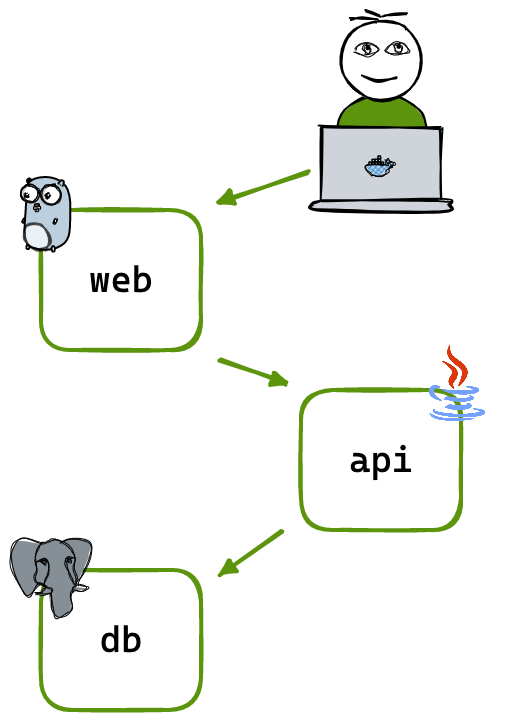Wordsmith is the demo project originally shown at DockerCon EU 2017 and 2018. It's used to demonstrate how to build and deploy a multi-container app to Compose, Docker Swarm, and Kubernetes.
The demo app runs across three containers:
- api - a Java REST API which serves words read from the database
- web - a Go web application that calls the API and builds words into sentences
- db - a Postgres database that stores words
The only requirement to build and run the app from source is Docker. Clone this repository and use Docker Compose to build all the images. You can use the new V2 Compose with docker compose or the classic docker-compose CLI:
docker compose up --buildOr you can pull pre-built images from Docker Hub using docker compose pull.
You can deploy the same app to Kubernetes using the Kustomize configuration. It will define all of the necessary Deployment and Service objects and a ConfigMap to provide the database schema.
Apply the manifest using kubectl while at the root of the project:
kubectl apply -k .Once the pods are running, browse to localhost:8080 and you will see the site.
Docker Desktop includes Kubernetes and the kubectl command-line, so you can work directly with the cluster. Check the services are up, and you should see output like this:
kubectl get svc
NAME TYPE CLUSTER-IP EXTERNAL-IP PORT(S) AGE
db ClusterIP None <none> 55555/TCP 2m
kubernetes ClusterIP 10.96.0.1 <none> 443/TCP 38d
web LoadBalancer 10.107.215.211 <pending> 8080:30220/TCP 2m
words ClusterIP None <none> 55555/TCP 2m
Check the pods are running and you should see one pod each for the database and web components and five pods for the words API:
kubectl get pods
NAME READY STATUS RESTARTS AGE
db-8678676c79-h2d99 1/1 Running 0 1m
web-5d6bfbbd8b-6zbl8 1/1 Running 0 1m
api-858f6678-6c8kk 1/1 Running 0 1m
api-858f6678-7bqbv 1/1 Running 0 1m
api-858f6678-fjdws 1/1 Running 0 1m
api-858f6678-rrr8c 1/1 Running 0 1m
api-858f6678-x9zqh 1/1 Running 0 1m
